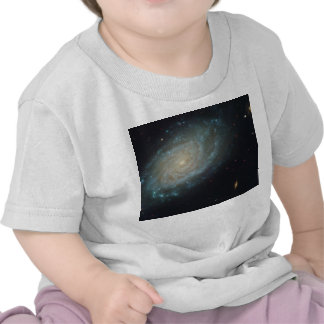tkc wrote:Boomer12k wrote:An impressively important galaxy, and a beautiful one at that....Amazing!!!
The galaxy in the upper right is interesting too....
:---[===] *
Which one? In one tight area cropped out of the upper right area I count at least four galaxies and one foreground star.

The upper right almost edge on spiral in red.
The upper right face on bar in yellow. (with foreground star)
The lower left brighter face on spiral with a much fainter face on spiral to its lower left.
Then there are various smudges. Are they galaxies too?
Thanks for pointing out these galaxies, tkc!

The strongly barred yellow galaxy actually has two long, faint bluish "outer arms" emanating from the ends of their thick inner yellow arms. The part that you cropped from the larger image shows the beginning of the bluish arm emanating from the upper left yellow arm, and the end of the bluish arm emanating from the lower right arm. Both these bluish arms can be seen in the middle of your cropped image. It is true that one or two of the brightenings in the upper arm could be background galaxies seen along the line of sight.
The color of the yellow galaxy seems realistic for a galaxy made up of old stars, encircled by two faint outer arms with star formation. Admittedly the yellow color of the galaxy is sufficiently yellow-orange that it must be affected by redshift reddening. The white galaxy to the left of it is a spiral galaxy with a lot of star formation, since its color is a mixture of an underlying yellowish population and a multitude of young blue stars. The white and the yellow galaxies are probably not as close together as they appear to be here, but they are probably at moderately similar distances from us. Judging by their colors and apparent stellar content, they appear to be equally affected by redshift reddening.
The red galaxy which appears to "sit on" the yellow galaxy is a background object, strongly affected by redshift reddening. But the color of this galaxy is is probably also affected by dust reddening due to dust in the yellow galaxy. The light from the red background galaxy has to pass through this dust, which reddens its light further. There is star formation in the red galaxy, seen as bright patches in its dust lane. The great contrast in color between the yellow and the red galaxy, coupled with a relatively modest contrast in size, suggests that the red galaxy is an intrinsically large and bright object.
Note that there is another strongly yellow galaxy in this picture, an edge-on galaxy at about 5 o'clock. This galaxy is made up of a predominantly old population, although there appear to be patches of younger stars immediately to the left of the dust lane. Fascinatingly, there are faint "extensions" of the dust lane stretching to a considerable distance on both sides of the main luminous body of the galaxy. No star formation can be seen in these extensions.
The yellow color of this edge-on galaxy suggests that it is at a moderately similar distance from us as the yellow galaxy in your cropped image, tkc. Faint bluish galaxies could be very distant, however, and if so they must be strongly dominated by ultraviolet light from star formation.
The interesting and revealing colors of the background galaxies could help explain the strange cyan color of NGC 3370 itself. It could be that the colors of this image have indeed been balanced in such a way that the background galaxies would have colors that help us identify their stellar contents and distances. Or, to put it differently: If NGC 3370 had been more realistically yellow, too many of the background galaxies might have been too uniformly red.
Ann
 NGC 3370: A Sharper View
NGC 3370: A Sharper View
